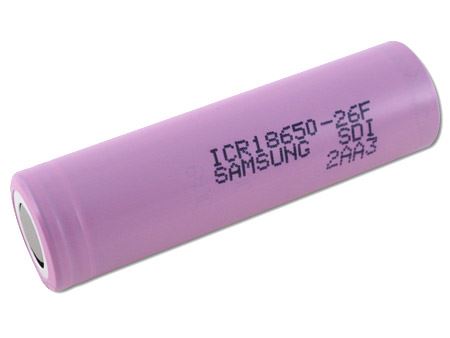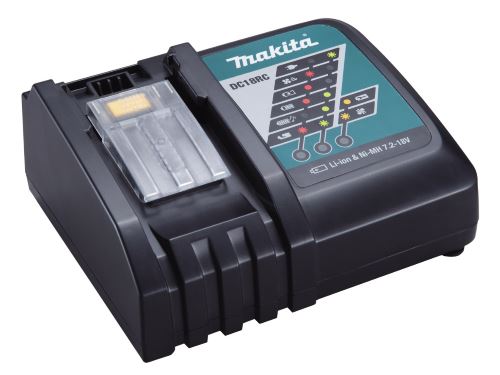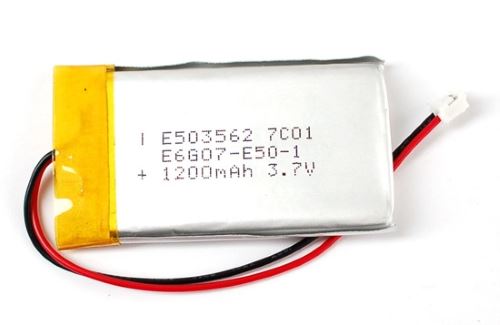But what about so-called Lithium Polymer batteries, also called LiPo or Li-poly batteries? Are they really better? If you believe the marketing folks, yes they are. But, as it turns out, you’ve been fooled just like me! First, a bit about lithium-ion batteries. In short, they’re awesome. Usually, they come in a rigid plastic case. For example, if you have a standard laptop, the battery pack is a big rectangular plastic thing. Inside, there are multiple cells – think AA battery, although the size of your typical lithium-ion cell is a bit bigger.  3.7V, 2600mAh lithium-ion cell 3.7V, 2600mAh lithium-ion cellLithium-ion cells have a nominal voltage of 3.7V. You might look at your laptop battery and see that it provides 11.1V. Then you might notice that 3.7 x 3 = 11.1. Thus, your laptop battery is a 3-cell battery. Other laptop batteries have different numbers of cells, but they all work the same.  Typical laptop battery, containing multiple lithium-ion cells Typical laptop battery, containing multiple lithium-ion cellsIn short, the rigid plastic case contains multiple lithium-ion cells, and usually some electronics for temperature monitoring, and charging. Lithium-ion batteries must be charged carefully, or they’ll explode and do other fun things. That’s why all Li-ion batteries have either specific fancy chargers or integrated charge-regulating electronics.
First, the batteries are fed with a constant current at a gradually increasing voltage. When the voltage limit per cell is reached, then the charger switches to a constant voltage (11.1V in the example of our 3-cell laptop battery) but with a gradually decreasing current flow. Ta-da! Your battery is charged. Helpful Tip: Lithium-ion batteries don’t like near-freezing temperatures. If you have a cordless screwdriver, for example, don’t charge the battery in your garage during the winter. Bring the charger and battery inside your house, and charge it where it’s warmer. Most chargers actually will not charge the battery at all if the temperature is too low (5°C / 41°F or lower). Other chargers will charge the battery, but they will use a “low temperature charging mode” that is less effective and not as good for the battery.  Makita DC18RC 18V Lithium-Ion Rapid Optimum Charger Makita DC18RC 18V Lithium-Ion Rapid Optimum Charger Okay, but what about lithium-polymer batteries? This is where it gets interesting. It turns out that what marketing departments are calling “Lithium-polymer batteries” are actually “Lithium-ion polymer” batteries. What the heck does that mean? In short, it means that so-called “lithium-polymer” batteries are almost exactly the same as lithium-ion batteries, but they are instead contained in a flexible polymer casing. It’s basically just a repackaged lithium-ion battery. There is another difference according to batteryuniversity.com: As far as the user is concerned, lithium polymer is essentially the same as lithium-ion. Li-polymer is unique in that a micro porous electrolyte replaces the traditional porous separator. Li-polymer offers slightly higher specific energy and can be made thinner than conventional Li-ion, but the manufacturing cost is higher by 10–30 percent.
There is such a thing as a real lithium-polymer battery, which uses a polymer as the electrolyte in the battery instead of other standard liquid electrolytes. This real lithium-polymer battery type is still more or less in the experimental phase. According to BatteryUniversity.com, the true lithium-polymer “plastic battery” never actually went mainstream because of performance issues at room temperature.  “LiPo” battery. Note flexible casing, and the 3.7V rating “LiPo” battery. Note flexible casing, and the 3.7V ratingNow, you may get longer battery life with your fancy laptop with its “fancy” not-lithium-polymer battery, but that’s primarily due to the flat, flexible format that allows the manufacturer to stuff more battery cells into the machine. That’s pretty much all there is to it. If you remove the relatively voluminous plastic case with standard lithium-ion cells inside, and you instead stick flat, flexible lithium-ion polymer cells in the same amount of space, you get more power to play with in the same volume – but the basic battery technology itself is the same: lithium-ion. This is what they call “lithium-polymer” these days. So, if you ever have two choices for purchasing a gizmo, and one has a lithium-ion battery and the other has a lithium-polymer, don’t worry: As far as you’re concerned, it’s all the same thing, but in a different package.
|